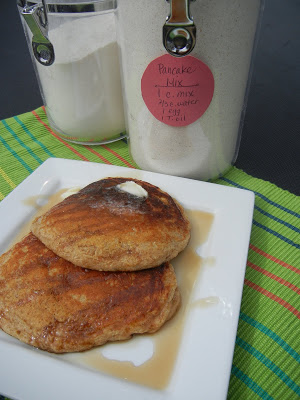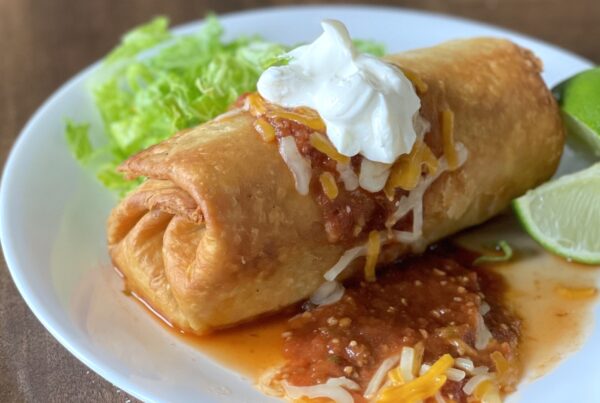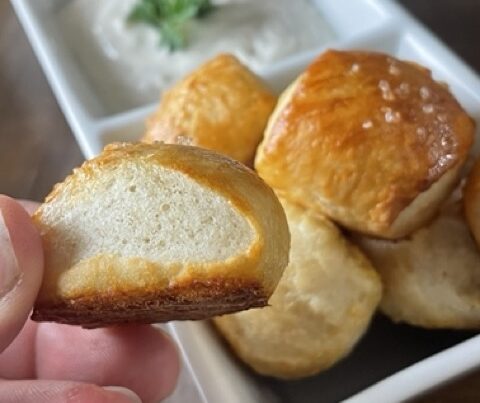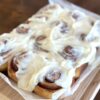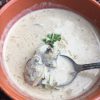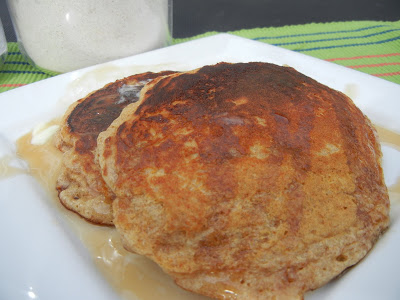
It is now March and another month has come and gone in our preparedness efforts. Does everyone have their salt and spices supply? If so, I would LOVE to hear your success stories!?!
I know I had fun this week going to Costco and picking up 1,400 lbs. of salt–ah! I didn’t have my phone or camera to take a picture, but it was really quite a scene, people thought I was nuts (which I thoroughly enjoy!) My Dad and I went to pick it up and could barely even push the flat bed cart down the aisles. Don’t worry..all of that salt wasn’t for me (surprise!). I picked up salt for 30 families in my neighborhood. We are all thrilled to officially have our year supply of salt. If you have not picked up your salt supply yet, head over to Costco or Sam’s Club and for under $3.50 you can pick up 25 lbs. of salt. Fabulous!!
 Now, onto another goal and food storage focus this month: BEANS (I can hear the applause already!) I am actually really excited about this new food storage item for March. I hope that by the time this month is over you will be shocked at the many ways you can use beans/legumes in your everyday cooking and baking needs. Most people think of beans as only good in chili’s. Oh contraire..beans are good in many other menu items; soups, stews, dips, appetizers, wraps, on salads, and even used in baked goods like cookies, cakes, brownies and breakfast foods. I know many of you won’t believe me now, but just wait until our month of bean-o-fun is over and then you will thank me for introducing you to such a versatile item.
Now, onto another goal and food storage focus this month: BEANS (I can hear the applause already!) I am actually really excited about this new food storage item for March. I hope that by the time this month is over you will be shocked at the many ways you can use beans/legumes in your everyday cooking and baking needs. Most people think of beans as only good in chili’s. Oh contraire..beans are good in many other menu items; soups, stews, dips, appetizers, wraps, on salads, and even used in baked goods like cookies, cakes, brownies and breakfast foods. I know many of you won’t believe me now, but just wait until our month of bean-o-fun is over and then you will thank me for introducing you to such a versatile item.
For those of you new to the health benefits and storing tips for beans, here are a few Bean 101 Facts/Info:
PRINTABLE BEAN/LEGUME HANDOUT
WHY STORE BEANS: Beans are an important part of your 3 month supply and your 12 month food storage supply. Canned beans and dried beans can be easily incorporated into your family’s diet. With canned beans you can make chilis, soups, stews, dips, enchiladas, etc. Besides canned beans, it is important to have an adequate supply of dried beans. Dried beans will last up to 30 years and will provide an important source of protein to your family’s diet. Dried beans can be ground into flour, cooked and pureed, and used in the place of oil in baked recipes, or boiled and used in some of your family’s favorite meals/soups. The uses of beans are endless!
SHELF LIFE OF BEANS: Dried beans will last nearly forever! Scientific studies on vitamin loss in dried beans during prolonged storage could not be found. The other nutritional components (proteins, carbohydrates, minerals, etc) also remained unchanged during long term storage. (Info from USU Extension Services)
HEALTH BENEFITS OF BEANS: Beans are an outstanding source of protein—the highest in the seed family (even more so than wheat). Wheat averages a protein level of 8-16% whereas beans have a an average protein level of 22%. They contain all essential amino acids, except methionine. Methionine can be obtained from corn, rice, or meat. When you pair beans with one of these items (such as rice) you then have a complete protein, which will sustain life. Beans are also an excellent source of fiber, starch, minerals and some vitamins.
HOW TO STORE BEANS: Canned beans can be kept on a shelf for 2-3 years. Dried beans can be stored in #10 cans (from the LDS Dry Pack Cannery), in Mylar bags or for less expensive storage they can be stored in food grade plastic containers. You can empty the dried beans into a plastic bucket or you can keep them in their original packaging within the bucket—either way will work just fine. You may also want to place an oxygen packet inside the bucket for optimal storage.
HOW TO COOK & USE DRIED BEANS: Typically, 3 cups of water is needed for every 1 cup of dried beans to hydrate. Allow beans to soak overnight and then rinse them in clean water. To cook beans, cover rehydrated beans with water in a stock pot. Simmer for 2-4 hours until beans are tender. Once tender they can be spiced and used in cooking recipes. As dried beans age the seeds become harder. This results in longer rehydration and cooking times. At some point, the seeds will no longer rehydrate and in that case must be ground as bean flour. One study found that small amounts of baking soda can help soften beans during soaking. (USU Extension Research)
Now that we know the importance of storing beans and some of the amazing health benefits, let me introduce you to a new recipe I have found for Ultra-Healthy-Whole-Grain Pancakes. If you are a fan of those light, airy, white, no-nutrition filled Krusteaz pancakes, then you may not be a fan of this recipe. If you however, are looking for a quick breakfast idea that is chuck-full of nutrients and whole grains, this recipe is for you. These pancakes are dense, filling and SO good for you! One of the benefits of eating whole grains is that you become full more quickly than if you were to eat white flour products. My son, who normally can eat 7-8 buttermilk (white flour) pancakes, could only eat two of these pancakes. He was stuffed after only a couple. In fact, all of my kids were so full after breakfast we didn’t even eat lunch until nearly 1:00. So..give these pancakes/waffles a try for a heart healthy, homemade breakfast (that surprisingly uses dried beans from your storage).
BEAN TIP #1: Dried beans can be ground into flour just like any other seed/kernel. Check with your wheat grinder specifications, but most hand or electric grinders will grind beans into flour without any problem. I prefer to grind the white beans rather than the black or pinto because they have a more mild flavor and they grind into a really pretty white flour. Feel free to experiment and grind several different kinds of beans and see what you come up with! Use this flour in any of your favorite baked good items–just be careful not to over do it–a little goes along way (No more than 25% of the flour in a recipe should be bean flour or it will be too strong) 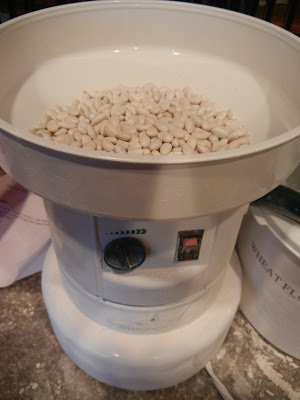
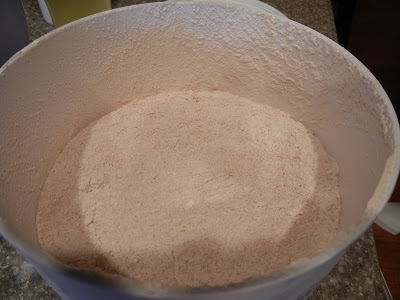 (Bean flour looks just like wheat flour–white beans work well for a white, soft flour texture)
(Bean flour looks just like wheat flour–white beans work well for a white, soft flour texture)
